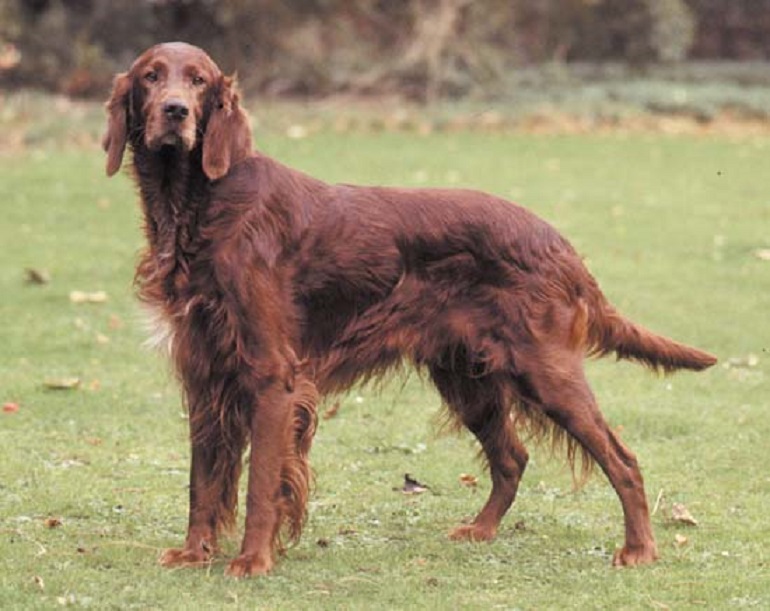
Irish Setter

Navigate through the tabs
Navigate through the tabs below to view the breed's info of your interest.
The breed's info is divided in four sections; namely:
the breed's history ,
the breed's main stats ,
the dog's potential health issues
and finally, how the breed scored in 26 different categories.
All the above information should give you a respectively good overview for the dog of your interest.
Dog Breed's Main Info
The Breed's History:
It is clear that, by the early 18th Century, the type of dog known as the "Setter" had come into its own right. It is also clear the Irish had begun actively breeding their own type. For example, the de Freyne family of French Park began keeping detailed stud records in 1793.
Other prominent landed Irish gentry also known to have been breeding setter lines at the same time include Lord Clancarty, Lord Dillon, and the Marquis of Waterford.
It was noted as early as 1845 that Setters in Ireland were predominantly either red, or, according to Youatt, "...very red, or red and white, or lemon coloured, or white patched with deep chestnut." Clearly, the preference for a solidly-coloured dog was having an effect on the appearance of the typical Irish-bred setter.
The Breed Standard for the modern Irish Setter was first drawn up by the Irish Red Setter Club in Dublin and approved on 29 March 1886. It consisted of a 100-point scale, with a given number of points awarded for each of the dog's physical attributes. The points system was later dropped; however, aside from some minor changes, the Standard remains largely unchanged today in most countries where the breed is formally recognised.
Country of Origin:
Ireland
Breed Group:
Sporting
Height:
2 feet, 1 inch to 2 feet, 3 inch. (63,5 to 68,58 cm)
Weight:
60 to 70 pounds (27,21 to 31,76 Kg)
Life Span:
11 to 15 years
Potential Health Issues:
Osteochondrosis Dissecans (OCD),
Hip Dysplasia,
Hypothyroidism,
Canine Leukocyte (CAD),
Epilepsy,
Progressive Retinal Atrophy (PRA),
Gastric Torsion (Bloat),
Hypertrophic Osteodystrophy (HOD),
Panosteitis
Adaptability
Apartment Living:
First Time Owners:
Sensitivity:
Being Alone:
Cold Weather:
Hot Weather:
Friendliness
Affection With Family:
With Kids:
With Dogs:
With Strangers:
Health and Grooming
Shedding:
Drooling:
Easy To Groom:
Overall Health:
Weight Gain Potential:
Size:
Training
Easiness:
Intelligence:
Mouthiness:
Prey Drive:
Barking or Howling:
Wanderlust:
Need For Exercise
Energy Level:
Intensity:
Exercise Needs:
Playfulness:
Our Mobile Application
Check out Our Mobile Application "Dog Breeds Central"
